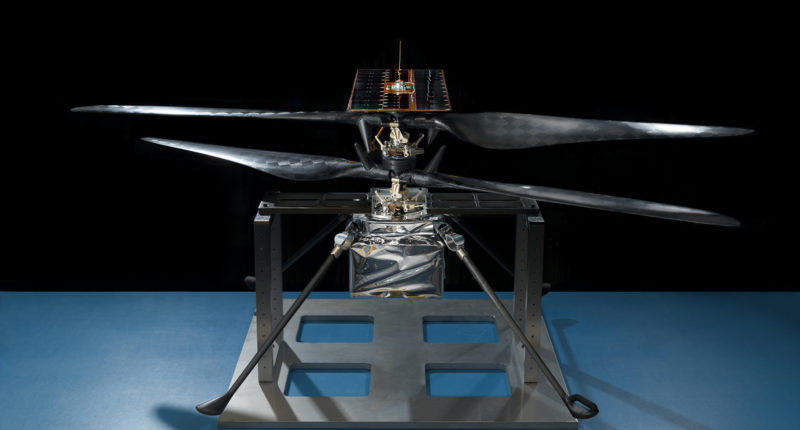Science fiction is getting closer to reality folks! The Mars helicopter, part of NASA’s Mars 2020 mission, passed all flight tests as planned, without any troubles. This helicopter will be essential to demonstrate that it is possible to fly vehicles having density much more than that of the atmosphere. In other words, it will deliver a technological feat by demonstrating a controlled flight on Mars, a planet whose atmospheric density is 1% the density of Earth’s.
In January 2019, a flight model was operated on a simulated Martian environment (created by NASA’s Jet Propulsion Laboratory) which was a 25-foot-wide vacuum chamber injected with carbon-dioxide (a major constituent of Mars atmosphere). Later compatibility tests were performed with the the Mars Helicopter Delivery System which is designed to hold together the Mars rover and the Mars helicopter during the launch and deployment of the spacecraft.
The autonomous helicopter weighs 4 lbs (1.8 kg) and carries no instruments except for a camera. The helicopter will demonstrate the possibility of heavier-than-air flights on a remote planet and resourcefulness of such a spacecraft in documenting the Martian surface. As the gravity of Mars is two-thirds of the Earth’s, the only challenge of this endeavor will be the thin atmosphere.
Additions of such a spacecraft to interplanetary explorations is essential as rovers often face problems like sandstorms and destinations which are difficult to reach such as valleys and craters.
At Lockheed Martin Space, Denver, the helicopter was checked to ensure that the electrical and mechanical connections are able to survive harsh conditions of the planet by exposing them to extreme temperatures (-129 degrees Celsius) and vibrations (which are probable to occur during the launch). The rotor blades have been spun to ensure that components work as a single unit. The blades constitute of more than 1500 pieces made from materials like carbon fiber, aerogel, copper, silicon and flight-grade aluminum among the major few.
The aim of NASA’s Mars 2020 mission is to search the Martian surface for potential hints of ancient life, to determine whether the environment will be suited for future explorers as well as conduct geological assessments of its Martian landing sites. The rover will carry various instruments to identify, collect and store (in sealed tubes) rock and soil samples in its vicinity. These samples will be stored for (possible) future deployment to Earth which will make it first mission to attempt this task.
The Mars Helicopter is set to launch on July 2020 from Cape Canaveral Air Force Station, Florida aboard an United Launch Alliance Atlas V rocket. It’s landing on Mars is estimated to be February 2021in the Jezero crater. During its landing, the rover will become the first spacecraft in the history of planetary space exploration with the ability to accurately retarget its point of touchdown during the landing sequence.
“We expect to complete our final tests and refinements and deliver the helicopter to the High Bay 1 clean room for integration with the rover sometime this summer, but we will never really be done with testing the helicopter until we fly at Mars,” said MiMi Aung, who is the project manager for the Mars Helicopter at NASA’s Jet Propulsion Laboratory in California.
The Tech Portal is published by Blue Box Media Private Limited. Our investors have no influence over our reporting. Read our full Ownership and Funding Disclosure →






